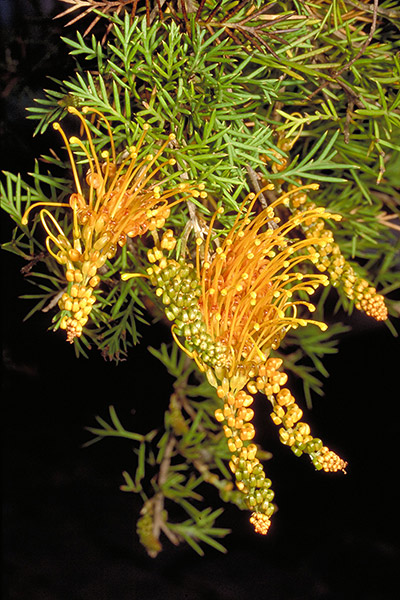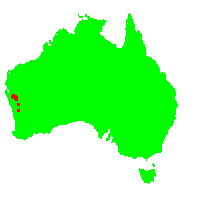General Description:
Grevillea tenuiloba is a small shrub from 0.5 to 1 metre high and up to 3 metres across. Leaves are up to 50 mm long by 25 mm wide and deeply lobed. Spectacular yellow to deep orange flower clusters of “toothbrush” configuration occur at the ends of the branches in winter to spring.
This species has not been widely cultivated but is now becoming more widely available. It is best suited to areas with a dry summer climate and it may prove more difficult in humid, wet summer districts such as coastal New South Wales and Queensland. In those areas grafting onto a hardy rootstock may be necessary for long term growth. It should be grown in a warm, sunny location in well drained soils. The low, spreading forms make excellent subjects for growing in containers. Like most grevilleas, the flowers attract honey-eating birds.
The species can be grown from seed which should be “nicked” with a sharp knife prior to sowing to improve germination, which can be unreliable. Cuttings from firm, current season’s growth can be slow to strike and success is improved by using a root promoting hormone. The species has been successfully grafted to hardy root stocks such as G.robusta and G.”Poorinda Royal Mantle”.
* EPBC Act = Environment Protection and Biodiversity Conservation Act 1999;
ROTAP = Rare or Threatened Australian Plants (Briggs and Leigh, 1988)
For further information refer the Australian Plants at Risk page

Grevillea tenuiloba
Photo: Brian Walters
 Australian Native Plants Society (Australia)
Australian Native Plants Society (Australia)